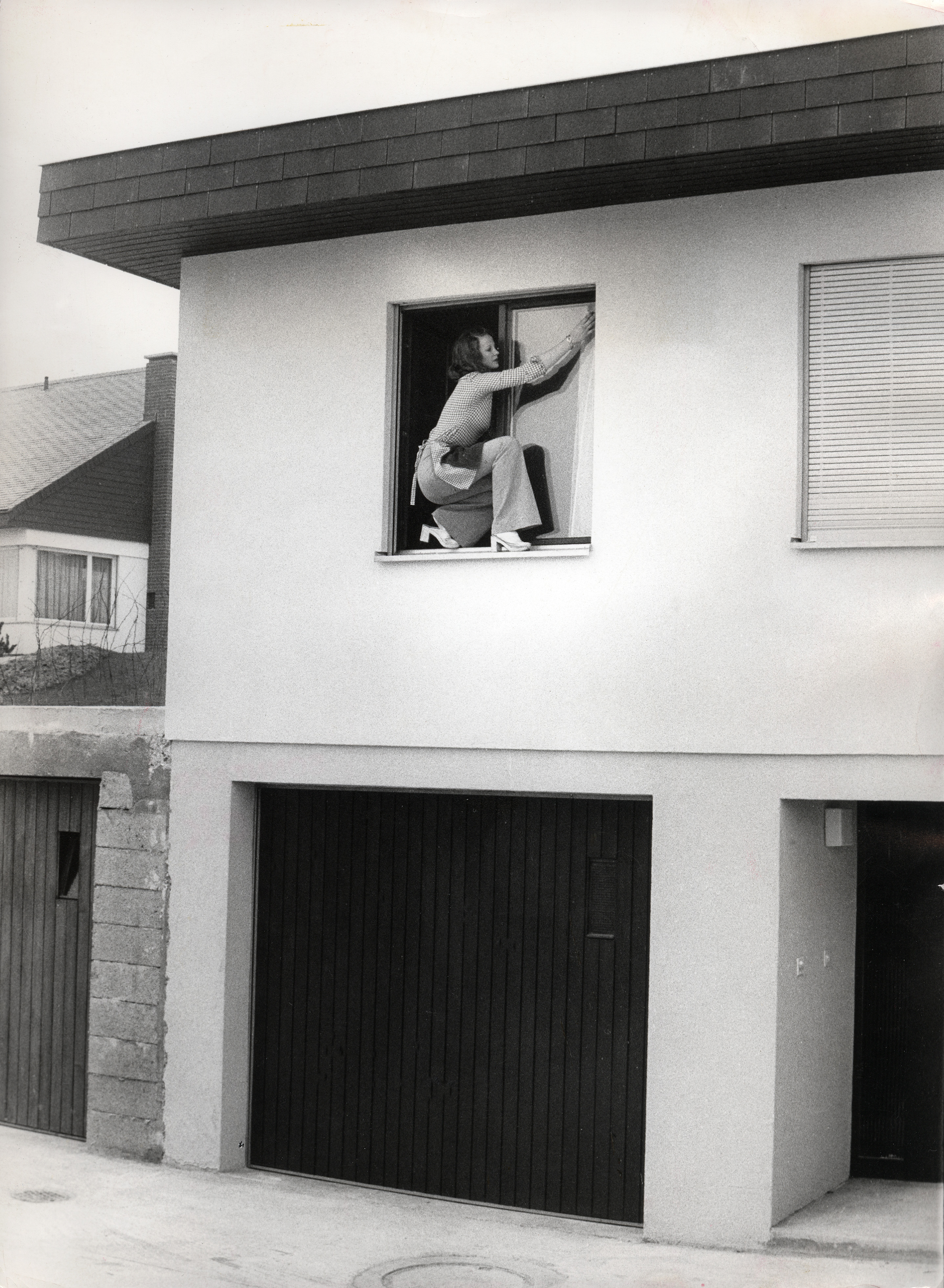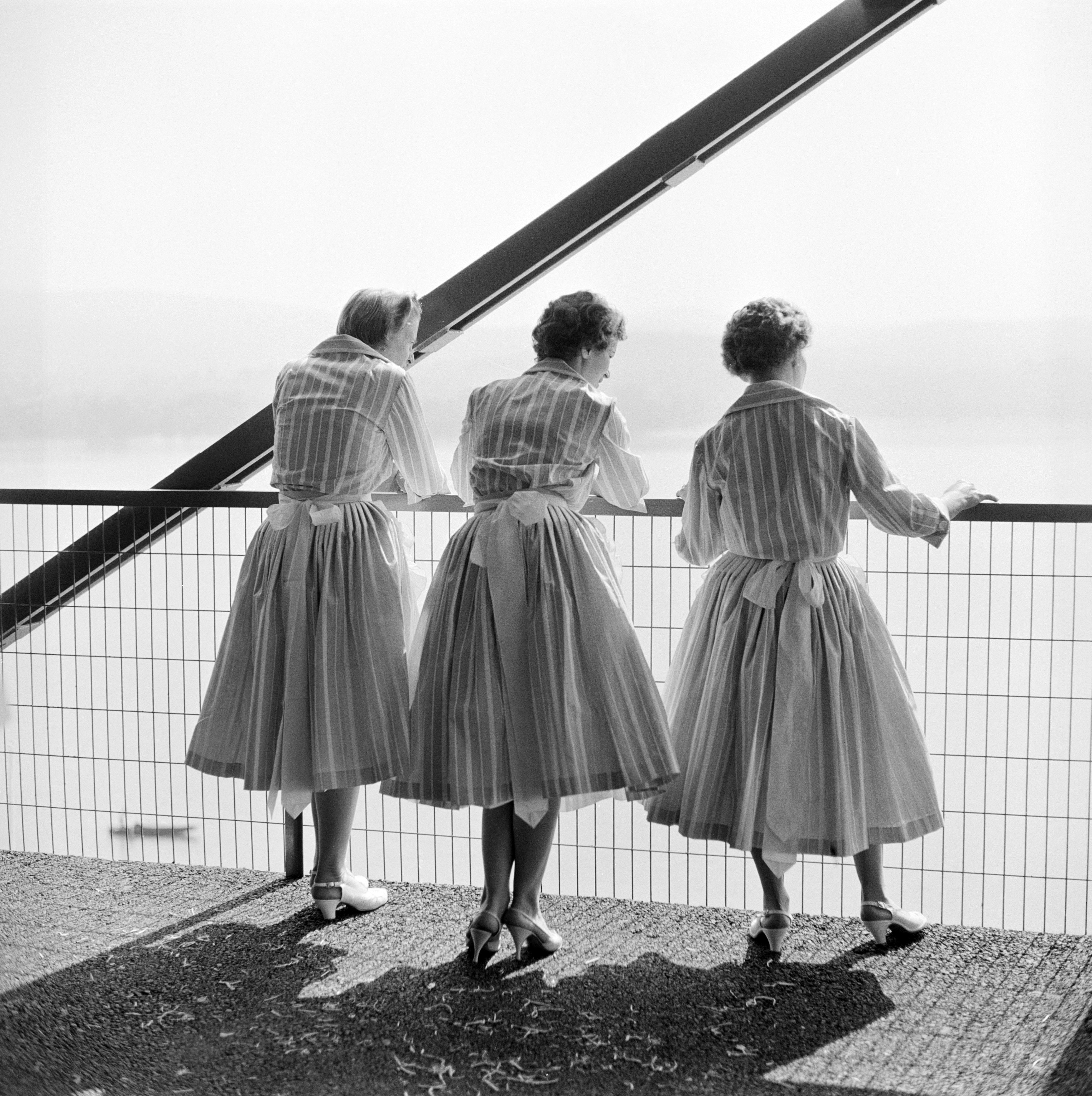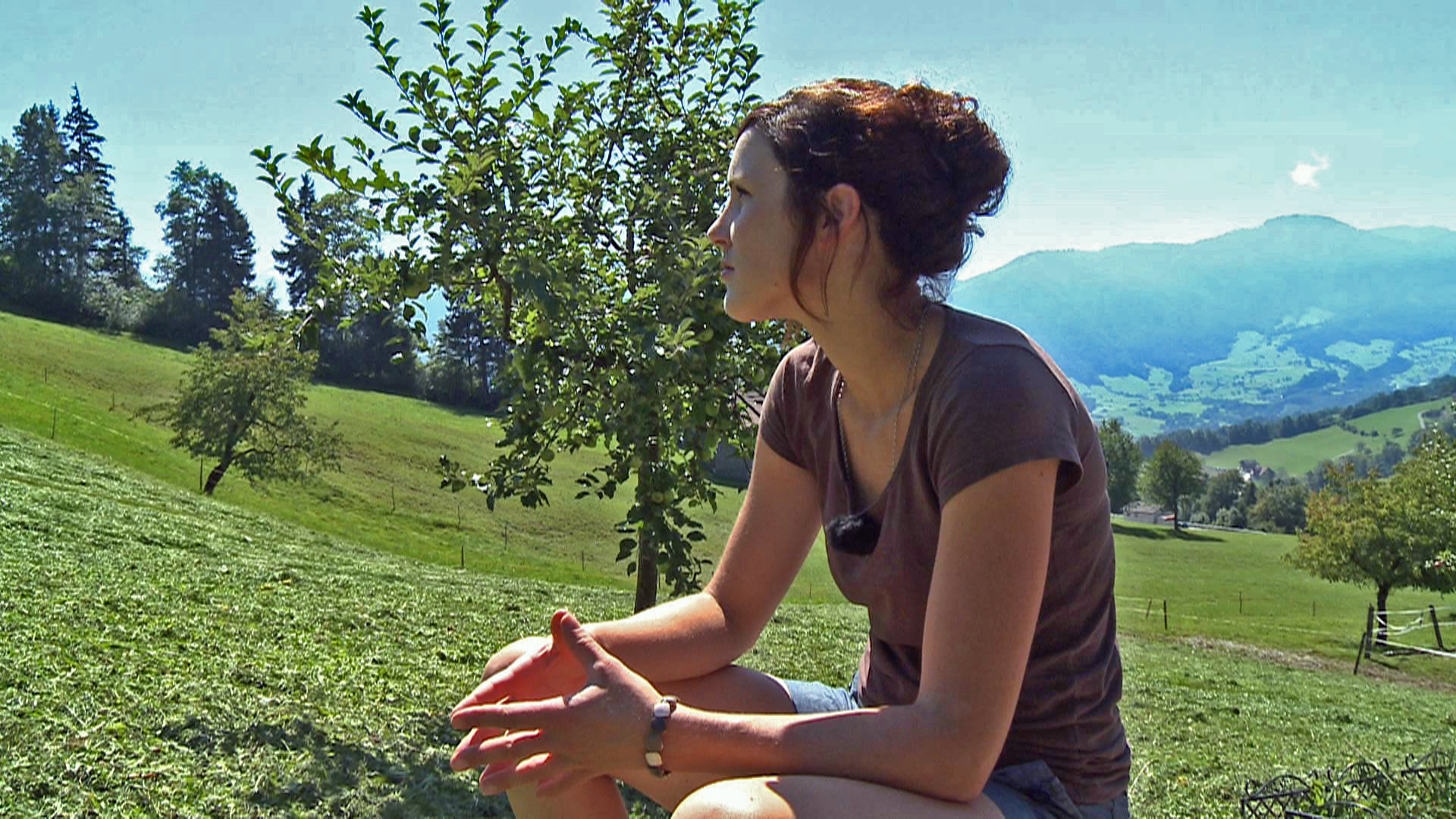Sweeping stereotypes out of school books

Are sexist stereotypes in Swiss school books a thing of the past, with little girls now portrayed as scientists and little boys as nurses? Far from it, say experts across the country.
While much has changed over the past forty years or more, many Swiss still remember the school textbooks illustrated with stereotypes of happy families – women portrayed only as stay-at-home mothers, men always working outside of the home.
The feminist protest movement of the 1970s drove a profound overhaul of educational materials. In 1999, the Swiss Conference of Gender Equality Delegates delivered a report which included a series of recommendations for “equality in teaching resources”. Fifteen years later, where do things stand?
Head coordinator of educational texts for Switzerland’s German-speaking cantons Marcel Gübeli says “stereotypes that were still around 15 years ago have been removed from 90 per cent of printed works”.
For the rest, Gübeli adds, new works are checked for stereotypes before being sent to the printers. And equality of the sexes is one of the criteria, alongside religion and respect of values, used to measure the “thematic equilibrium” of works.
Luca Pedrini, deputy head of secondary schools in Italian-speaking canton Ticino, explains that “great care is taken so that girls and boys are represented as equal, for example in the review of the various trades for the educational agenda”.

More
Showcasing the roles of women in Switzerland
“Black points”
Other specialists are less satisfied with the situation as it stands.
“On the whole, the situation has considerably improved, but there are still some black points,” Barbara Ruf, head of canton Bern’s gender equality office, told swissinfo.ch. “French-speaking Switzerland seems to be somewhat more advanced than the rest of the country.”
Although the University of Basel was the first to create a Centre for Gender Studies, it is in Geneva where the question of educational materials and teacher training has received the most attention.
To date, Geneva is the only canton to have developed a unit for gender representation in teacher training. Created in 1999, the unit is run by Isabelle Collet, who is in charge of training and research as well as being the author of a study on the sexual representation of science in children’s educational texts.
Twice the number of men
“Today, the inequalities that once made us jump up and down have disappeared,” says Collet. “Now we are fortunate to have several books that are “right”, but they are still a minority. In general, educational books contain twice the number of men as women.”
Muriel Golay, head of canton Geneva’s gender equality office, says that “people who write educational materials very often don’t notice the stereotypes because they are busy thinking about other things. Their primary concern is grammar or biology, for example.
“When they are looking for a phrase, the first which come to mind are common scenes. That’s how stereotypes are reproduced…”
Grammar and biology seem to be an ideal field for reproducing stereotypes, especially when it comes to representing comparatives. A typical explanation phrase might be: ‘Peter is stronger than Diana’, rather than ‘Susanne is faster than Christine’, explains Collet.
“It’s not about starting a war of the sexes and saying that ‘Susanne is stronger than Peter’, but there has to be something for everyone,” she says.
And the problem doesn’t end with the representation of the sexes.
“Female role models are also largely absent from teaching content,” says Golay. “We find very few women who mattered in history or who contributed to progress.”
A study by Isabelle Collet on science books for children reveals just how entrenched certain stereotypes are. For example, to illustrate the occurrence of the pituitary gland blocking the menstrual cycle in situations of stress, one book used an illustration of a girl studying and surrounded by a pile of books. The message – that studying is “soul-destroying” for women – is one that dates to the 19th century, says Collet.
In grammar: when a verb must be put in the infinitive in certain phrases for an exercise, phrases such as “Mum – to take – the dish out of the oven”.
In biology: one book illustrated a section on human muscles with pictures of boys, while girls were used to illustrate a chapter on reflexes.
In children’s literature, “we now see a number of female heroines,” says Collet. “What remains rare is for example to see scenes of mutual assistance between girls and boys.”
Educational toolbox
Finally, the history of the feminist movement is also missing.
“When we go into classrooms, young girls are shocked to learn that women had to ask permission from their husbands to open a bank account until 1988, which is not that long ago,” says Collet.
“It’s all these elements that contribute to girls being pigeonholed in certain roles – just as much as sexism, which is still very strong in public spaces like publicity,” notes Golay.
It’s for these reasons that Golay’s office created an educational toolbox, Sweeping Away Stereotypes, which contains support material for educational specialists across all sectors starting at primary level.
It is clear that “the message of equality must come from above, from elected officials,” says Collet.
Ruf agrees, pointing to the freedom the cantons and teachers enjoy. “The cantonal education ministries could be much more directive,” she adds.
“The moment is very favourable for reopening the discussion because, with the harmonised school plan in German-speaking Switzerland not yet finished, a number of educational materials will be revised and the cantons will also be developing new ones,” says Ruf.
So perhaps, courses on puberty which describe girls as beginning to use makeup at the same time as boys begin to shave, will, once and for all, become a thing of the past.
Specialists in gender representation in educational texts say that other stereotypes – racial, social, and historical – often follow the same logic.
Educational texts are unlikely to include children of colour even though multiculturalism is a reality in modern society.
And while half of all marriages end in divorce and blended families are common, the model of the perfect nuclear family remains omnipresent in educational texts.
Archaeologist Miriam Sénécheau, who teaches at Freiburg’s Albert-Ludwig University in Germany, studied archaeological representations in German educational texts used between 1994 and 2004.
“In the illustrations or in the text, women of the Palaeolithic age are either gathering food with the children or staying at home. The children play. Neolithic men work or build the houses. But we know that the women and children also did a lot of the heavy work,” says Sénécheau.
Translated from French by Sophie Douez

In compliance with the JTI standards
More: SWI swissinfo.ch certified by the Journalism Trust Initiative

You can find an overview of ongoing debates with our journalists here. Please join us!
If you want to start a conversation about a topic raised in this article or want to report factual errors, email us at english@swissinfo.ch.